2023.08.04.40
Files > Volume 8 > Vol 8 no 4 2023
Huda Adnan1*, Aboothar Ha. Al-Edhari2
1 Department of Ecology/ Faculty of Science/ University of Kufa/ Iraq.
2 Department of Ecology/ Faculty of Science /University of Kufa/ Iraq.
* Correspondence: [email protected]: Tel.: 07836071062
Available from: Available from. http://dx.doi.org/10.21931/RB/2023.08.04.40
ABSTRACT
Five species of Eryngium L. (Apiaceae) native to Iraq-Eryngium glomeratumLam, Eryngium creticum Lam, Eryngium thyrosoideum Boiss, Eryngium billardieri Lam., and L. Eryngium campestre—are the focus of this comparative chemical taxonomy. Chemical analysis revealed that the five species within the genus could be distinguished by their unique chemical signatures thanks to applying the GC Mass Spectrometer (GC-MS) technique to their secondary metabolic components. Species shared specific molecules but had distinct chemical make-ups in others. The chemical properties of the species in the genus were used to calculate Euclidean genetic distance values; the highest value was found to be 5.1962 between E.creticum and E.billardieri, and the pair with the smallest value of Euclidean distance (3.70) was E. campestre and E. billardieri. The clustering analysis was displayed in the phylogenetic tree. The species can be classified into three broad categories along a single Euclidean axis, as indicated by chemical evidence that corroborated the result of Principal Component Analysis (4.9). (PCA). The studies also demonstrated the ability to differentiate and identify evolutionary links across species by showing the independence of species in specific isolated chemicals.
Keywords: Eryngium; genus; Chemical taxonomic; Lam Eryngium, (GC-MS) technique.
INTRODUCTION
Since the beginning of creation and until now, plants have been the primary source to meet human needs in food, housing and clothing 1. Then, it classified them according to those needs, as plants constituted the most crucial aspect of human life since then, so man began studying them in a comprehensive study. With the progress of human perception and concepts, after the development of plants and the multiplicity of their types, and with the different environmental and climatic conditions, The interest of man began to focus on how to divide and arrange those plants in a way that makes it easy for him to benefit from and simplifies his use in his life 2. The genus Eryngium is a herbaceous annual, usually perennial (perennial in Iraq) 3, rarely shrubs, leaves divided or whole, usually prickly or ciliary, flowers with dense heads surrounded by foliage, petals Deeply grooved with a tightly curved lobule. The petals are often white or colored. Fruits are ovate, oblate, and sometimes semi-spherical. More than 230 species of plants belong to the genus Eryngium, which is found in a variety of habitats around the globe (excluding regions Tropical and South Africa) 4, where the genus Eryngium is the most prominent in the Apiaceae family 5. Scientist 6 referred to the naming of the Eryngium species as medicinal plants in most European countries, where its roots and some of its vegetative parts were used to treat some kidney and bladder diseases 7. It is widely spread in Greece, as blue dominates many of these lands. The roots of these plants are used in treating snakebite8, and their flowers are used in some Arab countries as vegetables Table 9. Both scholars 10indicated that the roots and leaves of plants of this genus are used to treat anemia colic and regulate the menstrual cycle and ascites. All living organisms contain a primary metabolism that provides plants with essential molecules (proteins, lipids, amino acids, nucleic acids and carbohydrates). Plants also produce compounds that do not come directly from photosynthesis but are derived from subsequent chemical reactions and are called these compounds with secondary metabolites 11. The data and chemical facts in the science of taxonomy are inseparable with the resumption of providing a vision of the relationship between plants by the internal structure; it is hoped to a large extent that these facts and chemical information will be able to reach Cytology and Genetics to compare the design of the elements of nucleic acids DNA. Thus, knowledge Inherited factors that help us in accurate diagnosis in isolating species and genera within the larger taxonomic orders; this desire arose among many researchers until the early nineteenth century. Hence, the chemical study is effectively helpful in plant taxonomy 12.
MATERIALS AND METHODS
The samples were collected in January 2022 from the herbarium (College of Education / Salah Al-Din University) in Erbil, where five samples of Eryngium species were obtained for study and testing.
Preparation of Plant Extract
The Sutar method was used in preparing the ethanolic solvent extract from the plant parts of the studied species as follows 13 :
Weigh 1 gm of the ground plant sample pre-dried by sunlight with a sensitive scale, wrap it in filter paper after recording the sample name symbol on it, and place it in the middle of the Soxolith apparatus.
Analysis using a Gas ChromatographicMass Spectrometer (GC-MS)
The alcoholic extract of the plant was analyzed by a GC-MS of the type Agelint (7820A) USA GC Mass Spectrometer, which is connected to the MS Spectrometer according to the following conditions for analysis :
1. Ultra lneit HP-5ms Column Capillary Separator 30m x 250um diameter x 0.25 um inside diameter (30m length x 250um diameter x 0.25um inside diameter ) of 100% dimethyl polysiloxane that acts as an electron sniper detector.
2. The flow rate was 1 ml/min, and the carrier gas was folium gas, with a purity of 99.999%.
3. The injector temperature was 250 C.
4. GC inlet line temperature 250°C
5. The injected fluid was a volume of (1) μL
6. The temperature of the oven is programmed at 60 ° C, with an increase of 7 ° C / min, and the increase continues until it reaches 180 ° C, then increases to 280 ° C and remains stable for 7 minutes.
7. The total time is 34 minutes from starting the device until it turns off
8. The pressure inside the device was 11.933 psi
9. Scanning range 50 m/z-500
10. The injection type was Splitless
The injection type was Splitless.
The chemical compounds were diagnosed according to GC-MS mass spectrometry, and the Industrial Research and Development Organization database was used to ascertain the identity of the compound, the molecular weight, and the structure of the test components. This test was conducted in the GC-MS unit at Ibn Al-Baytar Research Center / Baghdad.
RESULTS
Color chromatography-MS analysis (GC-MS) identified 100 peaks at the top of about 3 chemical compounds in the alcoholic extract of the species under study, where each species contained 20 peaks, as shown in the figures listed below.
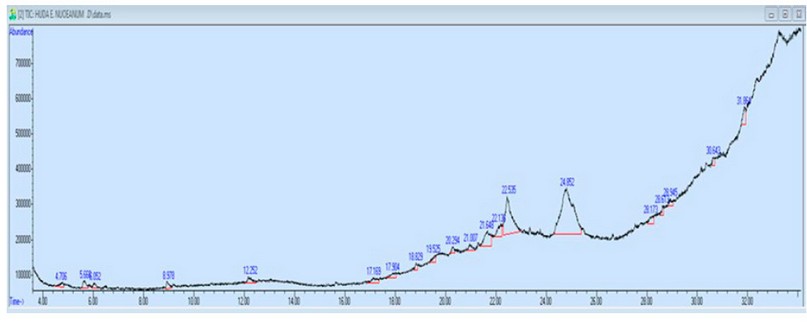
Figure 1. Stander curve for chemical compounds of the type E-glomeratum.
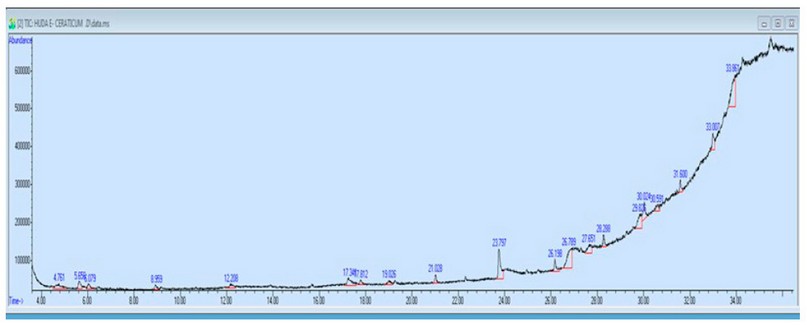
Figure 2. Stander curve for chemical compounds of type E- ceraticum.
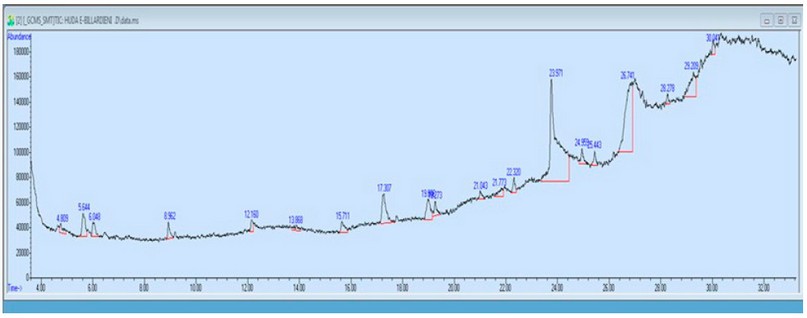
Figure 3. Stander curve for chemical compounds of the type E- billardieni.
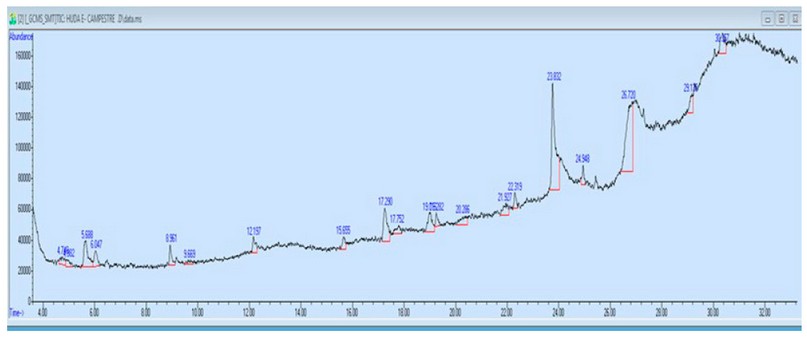
Figure 4. Stander curve for chemical compounds of the E-Campestre.
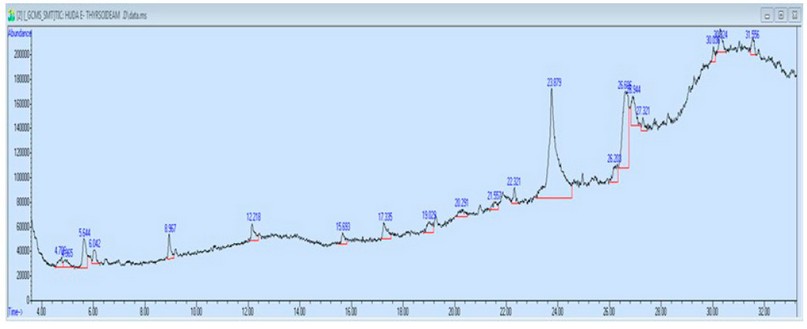
Figure 5. Stander curve for chemical compounds of the E- thyrosoideum.
Table 1. indicates the common compounds between the species of the genus Eryngium under study based on the chemical results obtained for the species using the GC-MS technique. As it was found that Eryngium-glomeratum shared several chemical compounds with other species, the number reached (13) compounds, while it was unique to the other compounds, which amounted to (47) compounds. As for the species Eryngium - creticum, it was associated with the species under study with (16) chemical compounds, while it was unique with (44) other compounds Also, the species Eryngium - billardieri, when separated, showed that it shared (19) compounds with the studied species of the genus Eryngium, while it was isolated with several compounds that reached (41) compounds , while the type Eryngium - campestre showed its overlap with other types with (16) chemical compounds and its isolation with (44) other compounds Also, the type Eryngium - thyrosoideum contained (18) common compounds, while it contained (42) other single chemical compounds.
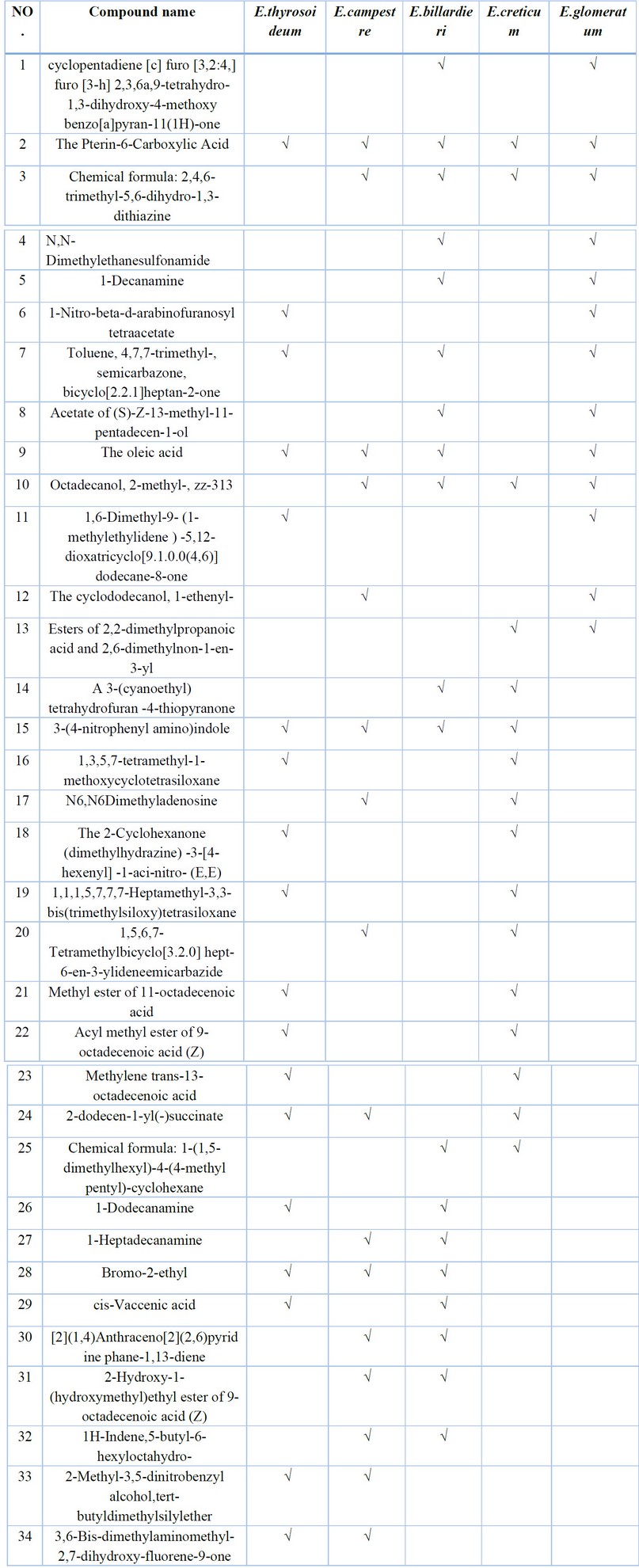
Table 1. Compounds common to the species of the genus Eryngium.
The results shown in Table 2. refer to the values of genetic dimensions amongst the class of the genus Eryngium in Iraq, based on the chemical study of the species under study using GC-MS technology. It was found that the highest Euclidean distance was (5.196) between the two species E- billardieri and E- creticum and that the lowest Euclidean distance was (3.7417) between the two species under study, E- billardieri and E - campestre.

Table 2. The Euclidean genetic distance for species of Eryngium is based on chemical indicators.
Figure 6 shows the cluster distribution scheme based on the results of separating chemical compounds using the GC-MS technique for the species under study in Iraq. The first significant clade included E.creticum, the secondary clad included E. campestre and E. thyrosoideum, and finally, the combined secondary clad of the double species. E. billaedieri and E. glomeratum.
The type clade or the secondary clade of E. thyrosoideum was considered the sister clade of the main clade of E.creticum with a complete cluster strength that reached 100% and an Euclidean distance of (4.9) distributed over the species. The secondary connective clades of the three species E. campestre,E. glomeratum, and E. billaedieri, in particular, were related and considered the sister clade of E. campestre, with a cluster strength of 90% and a Euclidean distance (4.3) between them.
As for the last clade, the most expensive sub-clade, the first was characterized by the two species E. billaedieri and E. glomeratum, with good cluster strength between them (70%) and with an Euclidean distance (3.7) between them, which was considered the brother clade associated with the clades of type E. campestre and with an outstanding reliability (80%). With an Euclidean distance of 3.8) between them.
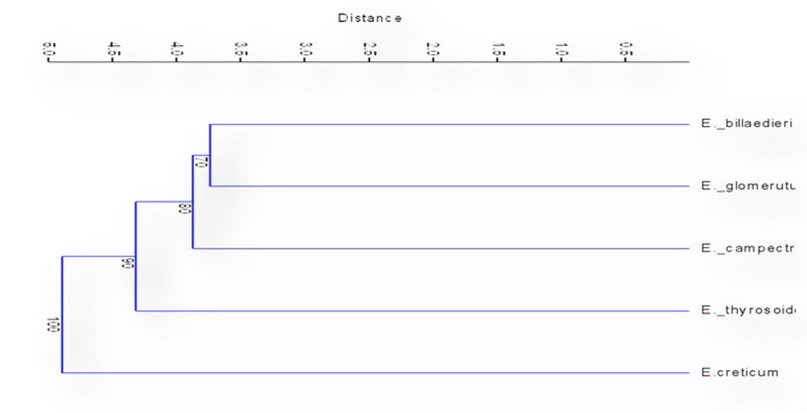
Figure 6. Genetic kinship tree of the genus Eryngium in Iraq, according to the UPGMA
Method (14), depending on the results of the chemical study, Figure 7, a precise match with the results of the genetic kinship tree in Figure (6), as the distribution results showed the matching of the groups that make up the genetic kinship tree based on chemical indicators, which show their distribution in two groups or significant clades, the first group included the clades that contain the two species E. billaedieri And E. glomeratum. In contrast, the second group, or the second major clad, included E. thyrosoideum, E. campestre and E. creticum under study.
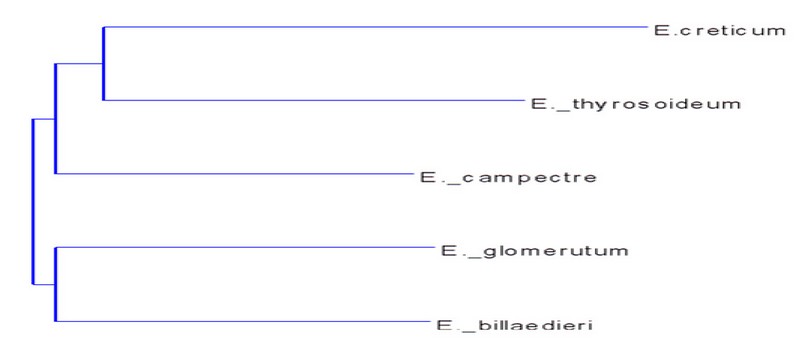
Figure 7. Genetic tree of Eryngium species based on chemical indicators by Neibor joining.
Table 3. indicates species occurrence in two main components, depending on the chemical indicators amongst them done Principal Component Analysis (PCA) using the PAST program. Component 1 recorded a variance rate of 38.59%, while Component 2 gave a genetic variance rate of %25.699, totaling 64.289% based on chemical indicators.

Table 3. PCA component analysis based on chemical indicators.
DISCUSSION
Common chemical compounds between species
When chromatographic analysis was performed with a GC-MS device, it was possible to separate species from the genus Eryngium based on the number of separated chemical compounds, although there was overlap between species. Each species under study, separated by the GC-MS device, contained 60 chemical compounds that shared several compounds while they were unique to others. Furthermore, this case constitutes an evolutionary phenomenon of importance, as the participation of species of the genus in certain compounds confirms the existence of a common evolutionary link between the species in terms of chemical characteristics, and this reflects its return to one common ancestral origin, and this was confirmed by the results of previous studies on certain plant families on the taxonomic importance For chemical compounds in distinguishing plant groups, including a study 15. The species of the genus Eryngium growing in Iraq showed significant and many variations in terms of their content of secondary metabolites, as many compounds were extracted, purified and separated using GC-MS technology, which reached a total of (300) compounds in all studied species, and the differences were returned. This chemical is one of the auxiliary taxonomic indications, which is on the side of the importance and one of the essential auxiliary factors in resolving much confusion and overlap between closely related species, which is difficult to distinguish between them except by using the results of different supporting studies in addition to the current molecular studies in agreement with what was reached Kremer 18 who pointed out the importance of chemical separation of phenolic compounds and essential oils in isolating and characterizing Eryngium species from each other.
Genetic dimension values based on chemical indicators
The results shown in Table (2) refer to the values of genetic dimensions amongst the species of the genus Eryngium in Iraq, built on the results of the chemical study of the species under study using GC-MS technology. It was found that the highest Euclidean distance was (5.196) between the two species E- billardieriand E- creticum, and that the lowest Euclidean distance was (3.7417) between the two species under study, E- billardieriand E - campestre. The results of the current study showed that the Euclidean distance between the sexes was ok.
Genetic kinship tree among species of the genus Eryngium based on chemical evidence.
The effects of the current study bared that the species belonging to the genus Eryngium fall into one leading group despite the species being separated from each other; as for the affinity with which some species came from their isolation and distribution within secondary clades, it confirms their introversion into one genus belonging to the family Apiaceae 16. The similarity in the chemical characteristics under study is reinforced by the ordinary ancestral regression of the genus types, in addition to the fact that these species occupy one geographical area with very close environmental conditions despite their differences in many other phenotypic characteristics. However, they are genetically close to each other, which was confirmed by the chemical study 17.
Analysis of the main component of Eryngium species based on chemical indicators
The results of the PCA (Principal Component Analysis shown in Figure (7) showed a precise match with the results of the genetic kinship tree in Figure (1), as the distribution results showed the matching of the groups that made up the genetic kinship tree based on the chemical indicators, which shows their distribution in two groups or clades The first group included the clades containing the two species E. billaedieri and E. glomeratum. In contrast, the second group, or the second major clade, included E. thyrosoideum, E. campestre and E. creticum under study.
The Principal Component Analysis (PCA)
The PAST program. Component 1 recorded a variance rate of 38.59%, while Component 2 gave a genetic variance rate of %25.699, totaling 64.289% based on chemical indicators. This is a positive indication of the efficiency of the chemical evidence used in the study in diagnosing plants and the differences between the species under study and their ability to estimate the magnitude of variations at the molecular level and at the level orthogonal to the two axes and their distribution through all the studied chemical indicators, which reflects the reality of these indicators and their comprehensiveness in plant cells 18. From all of the above, it became clear that it is possible to divide species, clarify the genetic Euclidean dimensions and clarify the kinship and divergence between species depending on the indicators of the chemical study, which may not strongly support other aspects such as anatomical and molecular studies. However, fortunately, it has proven its limits in the separation and distinction and finding evolutionary links between the species of the genus Eryngium in Iraq.
CONCLUSIONS
From the current study, it became clear that it is possible to divide species, clarify the genetic Euclidean dimensions and clarify the kinship and divergence between species depending on the indicators of the chemical study, which may not strongly support other aspects such as anatomical and molecular studies. However, fortunately, it has proven its limits in the separation and distinction and finding evolutionary links between the species of the genus Eryngium in Iraq.
Author Contributions: Conceptualization, Huda Adnnan; Aboothar Ha. Al-Edhari and Huda Adnnan; validation, Huda Adnnan; formal analysis, Huda Adnnan; data curation, Huda Adnnan; writing original draft preparation, Aboothar Ha. Al-Edhari; writing review and editing, Huda Adnnan; supervision, Aboothar Ha. Al-Edhari; project administration, Huda Adnnan; All authors have read and agreed to the published version of the manuscript."
Funding: "This research received no external funding."
Institutional Review Board Statement: In this section, "Not applicable."
Informed Consent Statement: We permit you to publish this article
Data Availability Statement: All data is available by the first author
Acknowledgments: I thank God abundantly for granting me success and assistance in completing this message and crowning my efforts with righteousness. I extend my deepest thanks and great gratitude to those with rights and merits, especially to my professor, Assistant Professor Dr. Abu Dhar Hatem Majid Al-Adhari. It gives me great pleasure to thank the teacher, Dr. Haider Aziz Al-Shibli, for his tireless efforts with me throughout the research period. I also extend my sincere thanks and gratitude to the Deanship of the College of Education / Salahaddin University in Erbil for allowing me to take the samples used in the study.
Conflicts of Interest: There is not any conflict of interest.
REFERENCES
1. Thiem, B. M; Kikowska, A. D ; Kurowska, Kalemba, Essential Oil Composition of the Different Parts and In Vitro Shoot Culture of Eryngium planum L. 2011
2. Al-Edhari, AS; Anatomical, Chemical and Molecular Systematic Study for The Genera AristidaL., StipagrostisNees . and Stipa L. in the Poaceae (Gramineae) Family in Iraq, 2015, 451.
3. Lajnef, H. F; Pasini, J.Politowicz,. Lipid characterization of Eryngiummaritimum seeds grown in Tunisia. Ind. Crops Prod. 2017, 105, 47–52
4. Conea, S., Parvu, A. E., Taulescu, M. A., &Vlase, L. Effects of Eryngium planum and Eryngium campestre extracts on ligature-induced rat periodontitis. Digest Journal of Nanomaterials and Biostructures, 2015, 10(2), 693-704.
5. Kupeli, E.M; Kartal, SE; Aslan, Yesilada, J Ethnopharmacol, 2006, 107(1), 32.
6. Guest, E. Notes on plants and plant products with their colloquial names in Iraq. Bull. No. 27. Government Press, 1933.
7. T. Jebril, N., Boden, R., Braungardt, C. Remediation Technique For Cadmium Contaminated Groundwater: A Systematic Review. Anbar Journal Of Agricultural Sciences, 2023; 21(1): 1-18. doi: 10.32649/ajas.2023.178800.
8. Kikowska M.B; Thiem In vitro systems of selected Eryngium species (E. planum, E. campestre, E. maritimum, and E. alpinum) for studying production of desired secondary metabolites (phenolic acids, flavonoids, triterpenoidsaponins, and essential oil). Springer, Cham, 2020.
9. M. Ajeel, A.; A. Mehdi, L. . Effect Of Eruca Sativa Seeds Powder As Feed Supplementation On Some Physiological Traits Of Male Lambs. Journal of Life Science and Applied Research. 2020, 1, 20-30.
10. Al-Rawi, A.H; Chakravarty. L. Medicinal Plants of Iraq Ministry of Agriculture & Irrigation, state board for agricultural & water resources research, National Herbarium of Iraq, Baghdad 1964, 41 ,.
11. Gibbs, R.D ; History of Chemical Taxonomy. 1963 PP: 41-88 in Swain, T . (ed.), Chemical Plant taxonomy. London,
12. Ibraheem M W, Muhaimeed A R, Mohammed Th. T. Leg cuts from Awaasi lambs fed a diet with varying levels of Rhus coriaria L., Physical dissection and chemical composition. Revis Bionatura 2022;7(4) 4. http://dx.doi.org/10.21931/RB/2022.07.04.4.
13. Sutar, N. R ;Garai, U.S ; Sharma, & Sharma, U. K. Anthelmintic activity of Platycladusorientalis leaves extract. International Journal of Parasitology Research, 2010. 2(2), 1-3.
14. Bibani, N. M. S., Khidhir, Z. K., Shaker, A. S., Kirkuki, S. M. S. & Abdulateef, S. M. Analyses of mycotoxins in broiler's local and imported feeds. Iraqi J. Vet.2019 Sci. 33.
15. Hilu, KW; De Wet, JM, and Seigler, D. Flavonoid Patterns and Systematics in Eleusine , Biochemical Systematics and Ecology , 1978 , 6:247-249.
16. Berenbaum, M. R. Chemical mediation of coevolution: phylogenetic evidence for Apiaceae and associates. Annals of the Missouri Botanical Garden, 2001, 45-59.
17. Hamad, H.M., Shabeeb, Z.A., Awad, M.M. Expressions of CD274 (PD-L1) and CD47 receptors on the surface of blast cells in AML patients (2022) Iraqi Journal of Science, 63 (6), pp. 2373-2387..
18. Kremer, D. ;Marijana, Z.K. ; Ivan. K. ; Iztok , J.K. , Tanja, P.; Andreja, C.; Sinisa, S.; Valerija, D. and Elma; V. Phytochemical Trants and Biological Activity of Eryngiumamethystinum and E.alpinum (Apiaceae) Horticulurae, 2021, 7.364.
Received: 26 September 2023 / Accepted: 15 April 2023 / Published:15 December 2023
Citation: Adnan, H.; Aboothar, H. Comparative Chemical Study For Species Of The Eryngium genus. Revis Bionatura 2023;8 (4) 40. http://dx.doi.org/10.21931/RB/2023.08.04.40
Publisher's Note: Bionatura stays neutral concerning jurisdictional claims in published maps and institutional affiliations.
Copyright: © 2023 by the authors. They were submitted for possible open-access publication under the terms and conditions of the Creative Commons Attribution (CC BY) license (https://creativecommons.org/licenses/by/4.0/).
